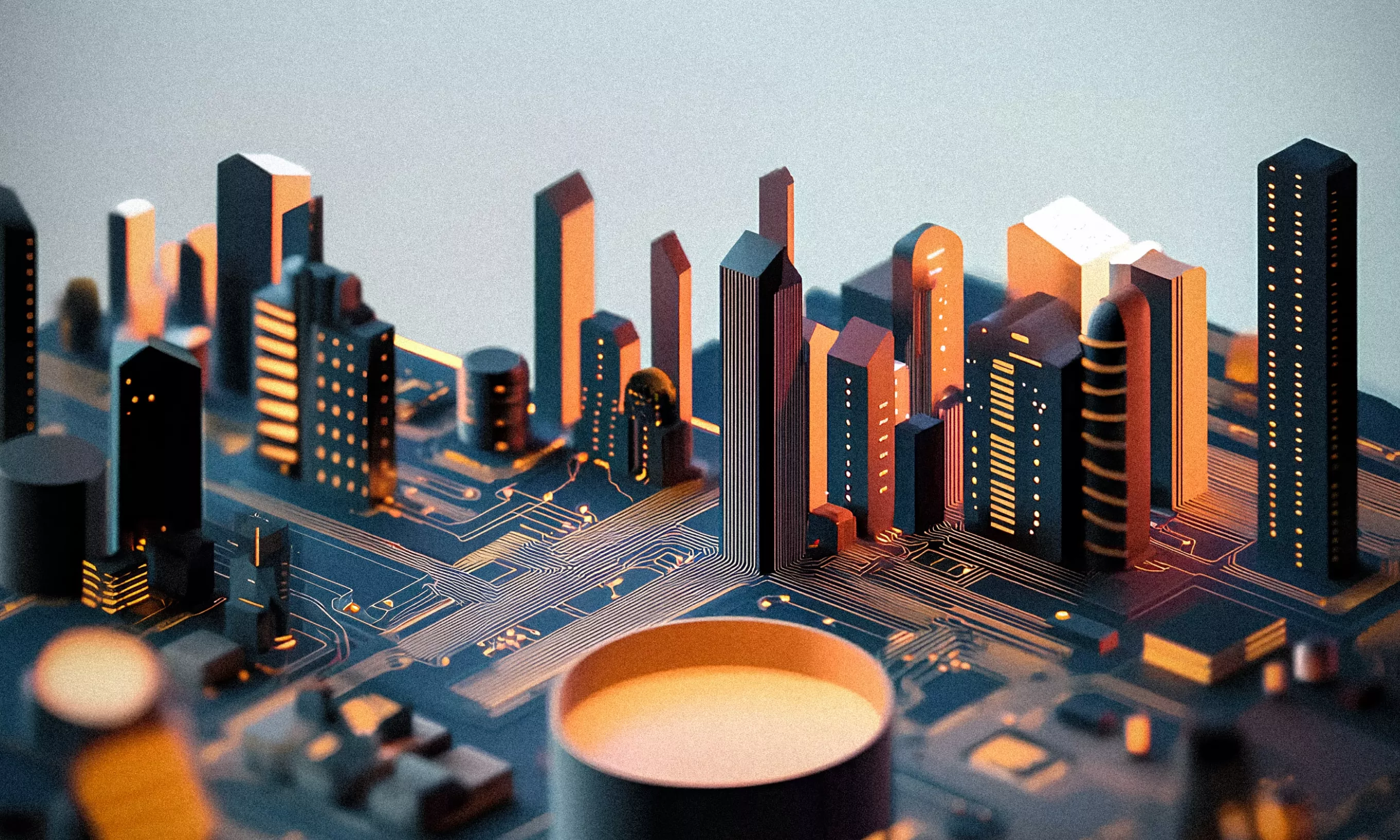Software development trends for 2025 are shaping up to be fast, bold, and driven by AI. Dive into the trends transforming the way we build and innovate.
Technology has never been a sector to stay still for long, but with recent advancements – especially those related to artificial intelligence – change is happening fast.
As we dive into the trends in software development this year, it’s clear that AI remains the driving force. An omnipresent influence, artificial intelligence is powering progress in many other trends that made the selection.
From cloud-native development and DevSecOps to 5G and IoT, let’s dive into the key trends that will shape the software development landscape in AD 2025.
Artificial intelligence and machine learning
The trend that has dominated for the past two years remains as powerful as ever in 2025. Whether we’re talking about AI-powered development tools, AI and ML integrations across industries, or the creation of new models and capabilities, we are entering an era where AI reigns supreme.
In general, what we expect in 2025 from these two rapidly developing fields is an expanding ability to analyze vast amounts of data in an increasingly efficient way.
A great example of how machine learning has evolved is Tesla. The company has made such progress in computer vision that its vehicles no longer need expensive sensors to navigate. With well-trained models, the camera feed provides sufficient input to get the vehicle safely from point A to point B. This shift is a defining characteristic of AI and ML progress – getting more meaningful insights and making more reliable conclusions based on the data available.
Low-code and no-code development platforms
Low-code and no-code platforms continue to grow in popularity, becoming more sophisticated with each passing year. By reducing development time, these platforms provide a significant competitive edge for businesses looking to quickly validate ideas, secure investment, and go to market faster.
It’s programming for “normies” – low-code and no-code platforms offer ready-made components that can be easily combined to fit specific needs, allowing rapid iteration from concept to deployment.
This can be especially useful in early-stage development. For example, a startup doesn’t need to immediately hire a team of developers; they can use one of these platforms to create a mockup or proof of concept they can take to potential investors.
However, no-code and low-code platforms are far from rendering developers obsolete. They are not suited for complex systems or custom behaviors that require a human touch. Their fixed components, designed for the most common use cases, cannot scale to meet the growing demands of users or tackle highly specific problems.
Cloud-native development and microservices architecture
Cloud-native development and microservices architecture go together like peanut butter and jelly, and both have been trending for the past four to five years. The advantages are clear: scalability, flexibility, and reduced infrastructure costs.
The core idea behind microservices is breaking systems into smaller, independent components that communicate with each other. This reduces risk – if one part fails, the rest continue working. Cloud-native platforms amplify this by enabling quick scaling and fault management. If a microservice fails, the system can automatically detect the issue and either remove it or deploy a new version.
Cloud services providers like AWS, Azure, and Google Cloud offer the infrastructure that makes this possible, enabling businesses to leverage the latest in cloud-native technologies without managing the complexities of hardware and servers.
This is especially useful for businesses with fluctuating demand, like e-commerce sites during peak seasons. Cloud-native platforms allow them to scale up rapidly when needed and reduce costs when traffic drops.
Cybersecurity
Cybersecurity continues to be a hot topic, and not just because 2024 saw the largest data breach in history and the largest outage in IT history. Security awareness is, thankfully, growing, both with individuals and organizations. People have come to recognize the importance of protecting their data and want reassurance that their digital service providers will do the same.
Cybersecurity is one of the many fields heavily influenced by advancements in AI – and with a dual impact. On one hand, cyberattacks like phishing are getting more sophisticated, with emails becoming much more plausible and harder to detect. And phishing remains one of the most common forms of cyberattack that often serves as a gateway to other threats, such as ransomware and identity theft.
On the other hand, AI is enhancing our defenses. For example, by analyzing server activity in real time, machine learning models can detect anomalies in traffic or requests that may indicate a potential attack, unauthorized access attempts, or unusual data transfers. This capability is expected to evolve even further in the future.
Focus on user experience (UX)
Not so much a trend as a necessity, focusing on the user experience of a digital product will never go out of style. People have gotten comfortable in the digital world and by now have many years of experience interacting with increasingly sophisticated digital products. We expect to complete tasks quickly and efficiently, with no confusion or frustration.
Achieving simplicity is a priority for all digital systems, and AI can also be of help here. By analyzing user patterns on websites or within apps, AI can point out the areas where users struggle – like clicking on the wrong element or navigating in unexpected ways – and help identify friction points in the user journey.
Analytics and user patterns are invaluable in fine-tuning the UX. Designers can use data on how features are used (or ignored!) to improve the experience, ensuring that each interaction aligns with user expectations and needs.
IoT, 5G, and edge computing
It’s no secret that the number of connected devices far exceeds the global population, and by 2030, it’s expected to double. Our homes, cars, and even cities are becoming smart and connected, continuously gathering data from sensors and sharing it across devices.
The wide application of the Internet of Things (IoT) is expanding further by the day. Healthcare, manufacturing, logistics, energy, retail – industries are embracing IoT to optimize processes, reduce costs, and unlock new efficiencies.
This growth is further fueled by advancements in 5G and edge computing. IoT generates vast amounts of data, and 5G enables that data to be transferred at incredible speed, allowing real-time communication between devices.
Edge computing complements this by processing data closer to the source – on sensors or local devices – with no need to send it to distant data centers. Smaller, more energy-efficient chips, along with advancements in wireless connectivity, make this possible, reducing latency, energy consumption, and bandwidth requirements.
It is a powerful combo – the one behind self-driving cars, for example – and the IoT evolution shows no signs of slowing down.
Remote and distributed teams model
While location remains a key factor in real estate, for software development companies, it’s no longer a decisive criterion. A couple of years ago, the pandemic opened many organizations’ eyes to the fact that remote work is not only possible but can also be highly effective, and the job market hasn’t been the same since.
The distributed teams model has become the new norm, with advancements in technologies like cloud computing supporting the shift. No longer tethered to a specific location, companies can now tap into a global talent pool, building or augmenting their teams with experts from across the world.
Whether it’s through team augmentation, fully outsourced projects, or hybrid models, businesses in need of development expertise can access it more easily than ever.
DevSecOps
Gone are the days of developing a digital product and then testing it for security issues. Security has shifted left, and when combined with DevOps, it creates a new approach where it is embedded in the development pipeline.
The threats in today’s digital landscape are growing and multiplying, and a data breach or outage can cause significant financial damage to a business. By making security a priority from the start, we reduce the likelihood of such events.
Embracing the DevSecOps approach, vulnerabilities are identified and addressed early. Starting with security reviews of any third-party packages used and moving on through code analyses, AI-powered automated tests, and real-time monitoring, there are security checks every step of the way, ensuring a reliable product upon delivery.
Sustainability in software development
As the world grapples with environmental challenges, sustainability is an increasingly important market demand, in software development as in any other area. Data centers consume vast amounts of energy, and development processes rely heavily on computational resources, contributing to the industry’s carbon footprint. It’s no wonder there’s a growing push for eco-friendly practices in the software development industry – and finding partners who share these values.
One key way developers are addressing this is by optimizing code and architecture to reduce energy consumption. For example, not every app has to always be up and running. By using serverless computing (a model where cloud services automatically manage infrastructure and scale resources as needed), developers can ensure that applications scale down to zero when not in use. This won’t be possible in every scenario, but it’s important to balance the needs of the product with sustainable practices.
No longer just a passing trend, sustainability is becoming a central concern both for consumers and businesses, and development teams have an important part to play in reducing the environmental impact of technology.
Chart the future with 2025 software development trends
As we’ve seen from the trends in software development for 2025, AI is still leading the charge (though we might have passed the peak hype). Not just a tool, but a catalyst, artificial intelligence is driving new ways of building, scaling, and securing digital products.
But beyond just innovation, these advancements point to a larger trend: software becoming even more integrated into our daily lives. From predictive technology that anticipates our needs to more personalized and efficient experiences, software is moving beyond being just a tool and becoming a central part of how we live, work, and interact.
Looking ahead, this year’s software development trends promise smarter products and services for businesses and consumers alike. Maybe these products will be driving better health outcomes, expanding access to financial opportunities, or helping us reduce waste (whether in energy or resources) – whatever the application, technology is redefining what’s possible, and software development will play a significant role in creating solutions that truly enhance the human experience.










